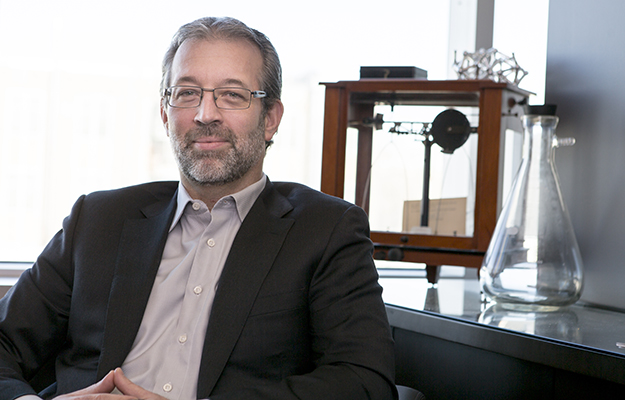Chemistry professor John Valliant to receive Brockhouse Canada Prize

The award, one of eight national prizes being presented by the Natural Sciences and Engineering Research Council, is named after Bertram Brockhouse, the McMaster physicist who earned the Nobel Prize for Physics in 1994.
Moving science from the laboratory to the patient is a passion for McMaster chemistry professor John Valliant.
It’s also the mission of the federally and provincially funded Centre for Probe Development and Commercialization (CPDC), of which Valliant is founder, and which has its home on campus.
“It’s exciting to do new science and work with physicians to help patients at the same time,” he said.
Valliant is part of a team of scientists from across Canada which has been awarded the Brockhouse Canada Prize for Interdisciplinary Research in Science and Engineering.
The award, one of eight national prizes being presented by the Natural Sciences and Engineering Research Council, is named after Bertram Brockhouse, the McMaster physicist who earned the Nobel Prize for Physics in 1994.
Together, the group which is organized under the auspices of the national TRIUMF consortium, has used expertise in nuclear medicine, chemistry, physics, regulatory affairs and clinical testing to develop a new way to make the isotope, technetium-99m (Tc-99m), which is used daily for imaging to diagnose patients with cancer and heart disease.
“Everyone on this team is committed to meeting the goal,” Valliant said. “This would never have been possible without a team-based approach.”
The team also includes Paul Schaffer (TRIUMF), François Bénard (UBC), Anna Celler (UBC), Michael Kovacs (Western University) and Tom Ruth (TRIUMF).
The group set out to find a convenient, safe and affordable new way for hospitals to produce the medical isotope locally on hospital based cyclotrons, as opposed to at large nuclear reactors. Their new method has moved from an idea to the threshold of widespread use, with clinical trials about to start across Canada.
The trials will compare the effectiveness of the cyclotron-made isotope to a reactor-made equivalent.
There is strong potential to export the technology to other countries as well, Valliant said. Globally, there is demand for about 70,000 doses of the isotope every day, a number that includes the isotopes used in about 5,000 procedures in Canada each day.
Valliant explains that the concept of manufacturing Tc-99m using a cyclotron had earlier been proven in theory, but making it possible and affordable to produce it on a broader scale was an especially daunting challenge for the group — one that could only be overcome through collaboration among a broad network of researchers from multiple disciplines, working at multiple sites.
Each of the scientists named in the award represents many others, Valliant points out. In his case, Valliant represents 70 people from the CPDC, which opened as a national centre of excellence in 2008, and which works in close collaboration with colleagues in nuclear medicine and oncology to enhance cancer care.
Looking to the future, Valliant sees another opportunity to impact science and society by collaborating with McMaster’s Biointerfaces Institute to develop new imaging technologies that can detect infectious diseases, by using a cross-disciplinary approach similar to the one that earned the Brockhouse prize.
“We’re just getting started,” Valliant said. “I think this is where McMaster can really make an impact, by breaking down barriers between areas of research.”

